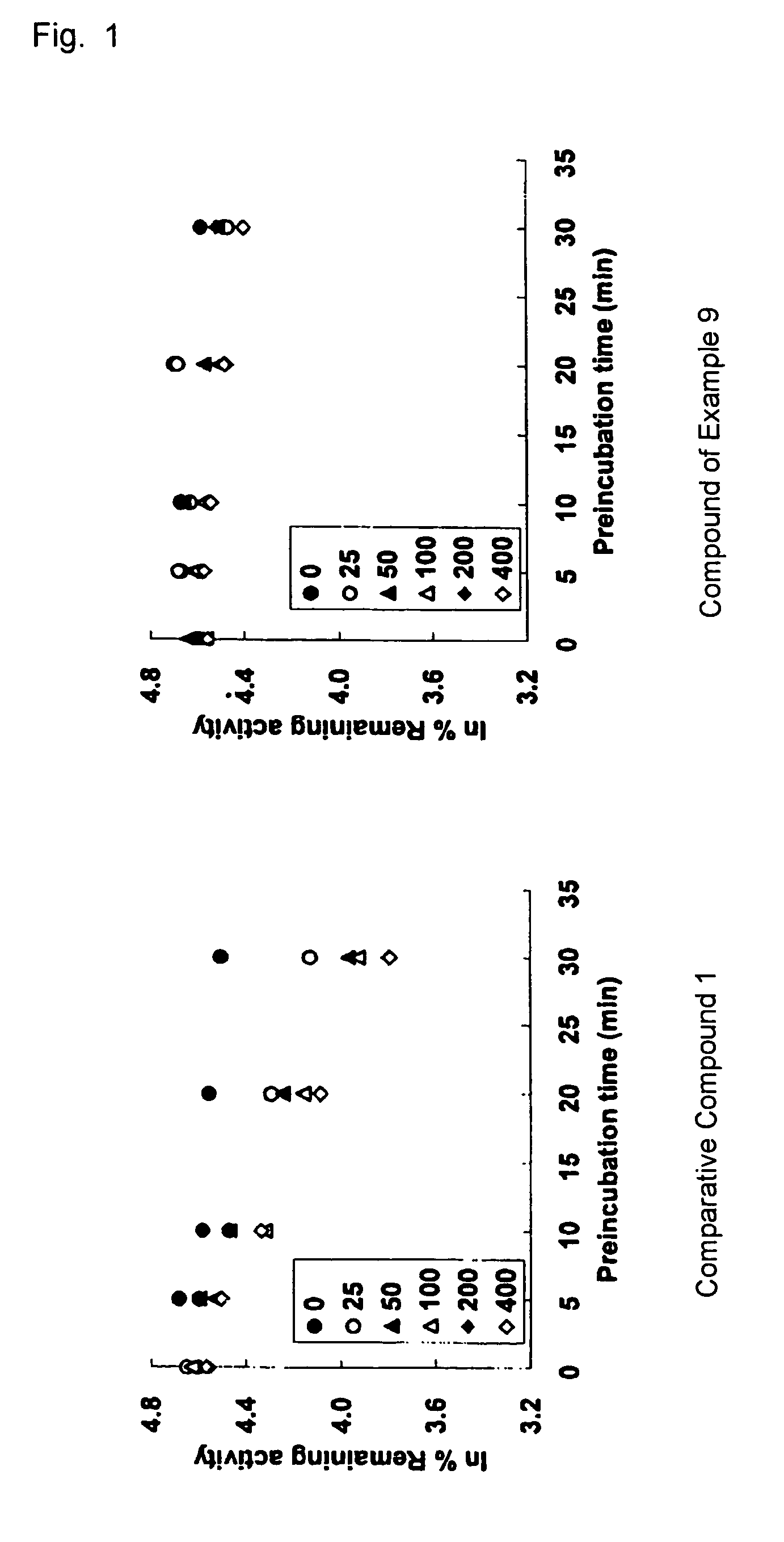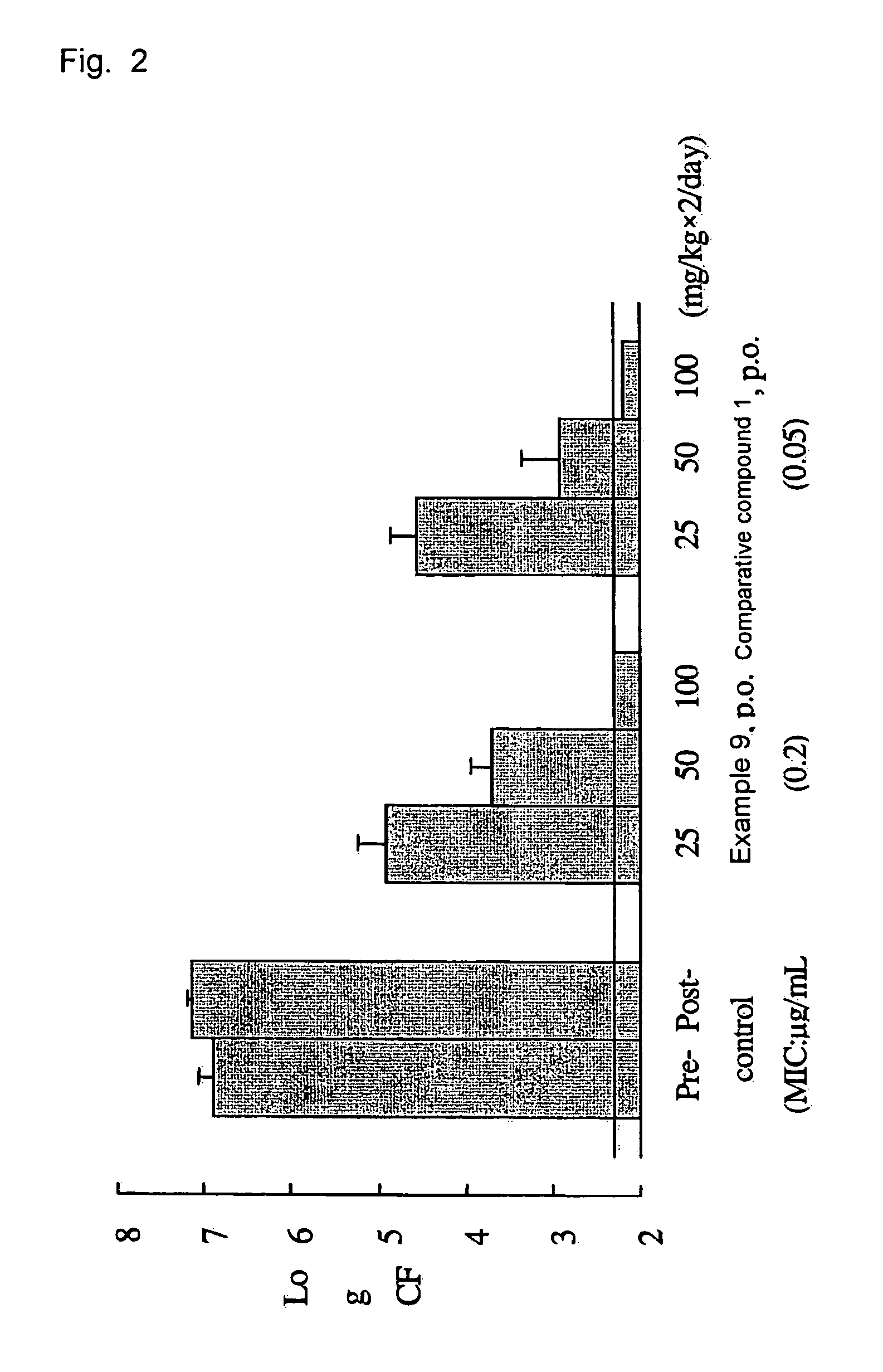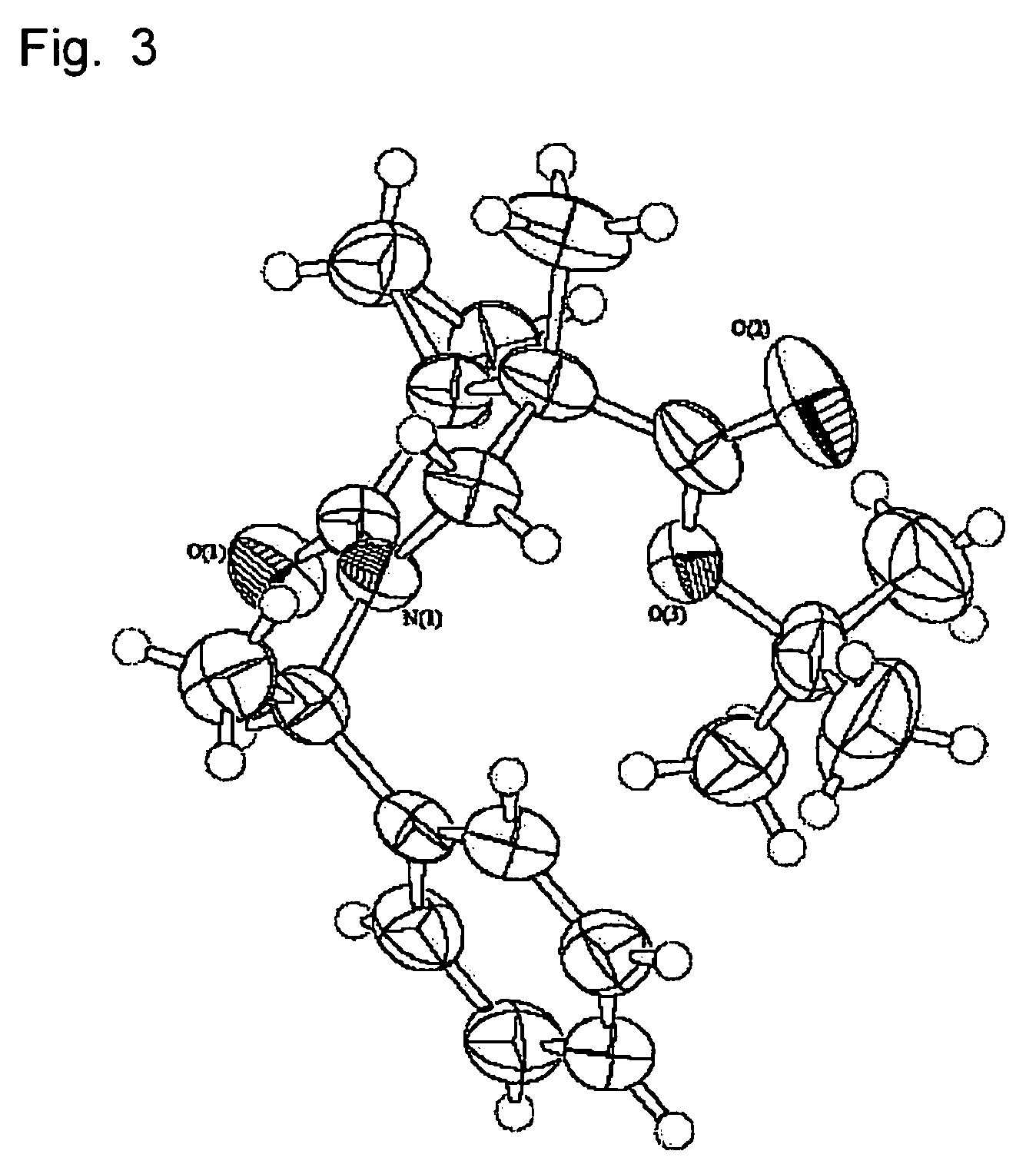Tri-, tetra-substituted-3-aminopyrrolidine derivative
a technology of tetra-substituted and pyrrolidine, which is applied in the direction of antibacterial agents, drug compositions, chemical production, etc., can solve the problems of insufficient suitability of many compounds for quinolone antibacterial drugs, low sensitivity of quinolone synthetic antibacterial drugs, and high antibacterial activity of quinolone compounds, etc., to achieve strong antibacterial activity, less sensitive to quinolone antibacterial drugs, and excellent drug properties
- Summary
- Abstract
- Description
- Claims
- Application Information
AI Technical Summary
Benefits of technology
Problems solved by technology
Method used
Image
Examples
reference example 1
Ethyl(3R*,4R*)-1-benzyl-3,4-dimethylpyrrolidine-3-carboxylate
[0206]
[0207]To a solution of tiglic acid ethyl ester (6.41 g, 50.0 mmol) and N-benzyl-N-(methoxy-methyl)-N-trimethylsilyl methylamine (15.35 g, 60.0 mmol) in dichloromethane (150 mL), a catalytic amount of trifluoroacetic acid was added at room temperature, and the mixture was stirred in an oil bath at 40° C. for 10 hours. The reaction mixture was diluted by adding ethyl acetate (500 mL), and the solution was washed with saturated aqueous solution of sodium hydrogencarbonate (200 mL) and saturated aqueous solution of sodium chloride (200 mL), and dried with anhydrous sodium sulfate. After removing the dessicating agent by filtration, the solvent was removed by distillation under reduced pressure. The resulting residue was purified by silica gel column chromatography (chloroform:methanol, 49:1→19:1→9:1) to obtain 13.73 g of crude title compound as a pale yellow oil. The crude product was used in the subsequent reaction with...
reference example 2
Ethyl(3R*,4R*)-1-benzyloxycarbonyl-3,4-dimethylpyrrolidine-3-carboxylate
[0210]
[0211]To a solution of ethyl(3R*,4R*)-1-benzyl-3,4-dimethylpyrrolidine-3-carboxylate (2.75 g, 10.0 mmol) in dichloromethane (30 mL), benzyl chloroformate (2.14 mL, 15.0 mmol) was added at room temperature, and the mixture was stirred at room temperature for 6 hours. Benzyl chloroformate (2.14 mL, 15.0 mmol) was also added to the mixture, and the mixture was stirred at room temperature for another 14 hours. The solvent was removed by distillation under reduced pressure, and the residue was purified by silica gel column chromatography (hexane:ethyl acetate, 9:1→4:1→2:1) to obtain 1.64 g of the title compound (5.37 mmol, 2 steps, 54%) as a colorless transparent oil.
[0212]1H-NMR (400 MHz, CDCl3)δ ppm: 0.99 (1.5H, d, J=7.1 Hz), 1.02 (1.5H, d, J=7.1 Hz), 1.18 (3H, s), 1.26 (3H, t, J=7.1 Hz), 2.57-2.66 (1H, m), 3.01-3.10 (1H, m), 3.39 (0.5H, d, J=10.7 Hz), 3.45 (0.5H, d, J=11.0 Hz), 3.66 (1H, td, J=11.0, 8.0 Hz),...
reference example 3
(3R*,4S*)-1-Benzyloxycarbonyl-3-(tert-butoxycarbonylamino)-3,4-dimethylpyrrolidine
[0214]
[0215]To a solution of ethyl(3R*,4R*)-1-benzyloxycarbonyl-3,4-dimethylpyrrolidine-3-carboxylate (1.63 g, 5.34 mmol) in ethanol (16 mL), 1N aqueous solution of sodium hydroxide (16.0 mL, 16.0 mmol) was added at room temperature, and the mixture was stirred at room temperature for 3.5 hours. After concentrating the solvent under reduced pressure, 1N hydrochloric acid was added to the mixture for acidification, and the mixture was extracted with ethyl acetate (150 mL). The resulting organic layer was dried with anhydrous sodium sulfate, and after removing the dessicating agent by filtration, the solvent was removed by distillation under reduced pressure to obtain crude product in the form of carboxylic acid. The crude product in the form of a carboxylic acid was used in the subsequent reaction with no further purification.
[0216]To a solution of the thus obtained crude product in the form of a carbox...
PUM
| Property | Measurement | Unit |
|---|---|---|
| temperature | aaaaa | aaaaa |
| temperature | aaaaa | aaaaa |
| weight | aaaaa | aaaaa |
Abstract
Description
Claims
Application Information
 Login to View More
Login to View More - R&D
- Intellectual Property
- Life Sciences
- Materials
- Tech Scout
- Unparalleled Data Quality
- Higher Quality Content
- 60% Fewer Hallucinations
Browse by: Latest US Patents, China's latest patents, Technical Efficacy Thesaurus, Application Domain, Technology Topic, Popular Technical Reports.
© 2025 PatSnap. All rights reserved.Legal|Privacy policy|Modern Slavery Act Transparency Statement|Sitemap|About US| Contact US: help@patsnap.com



